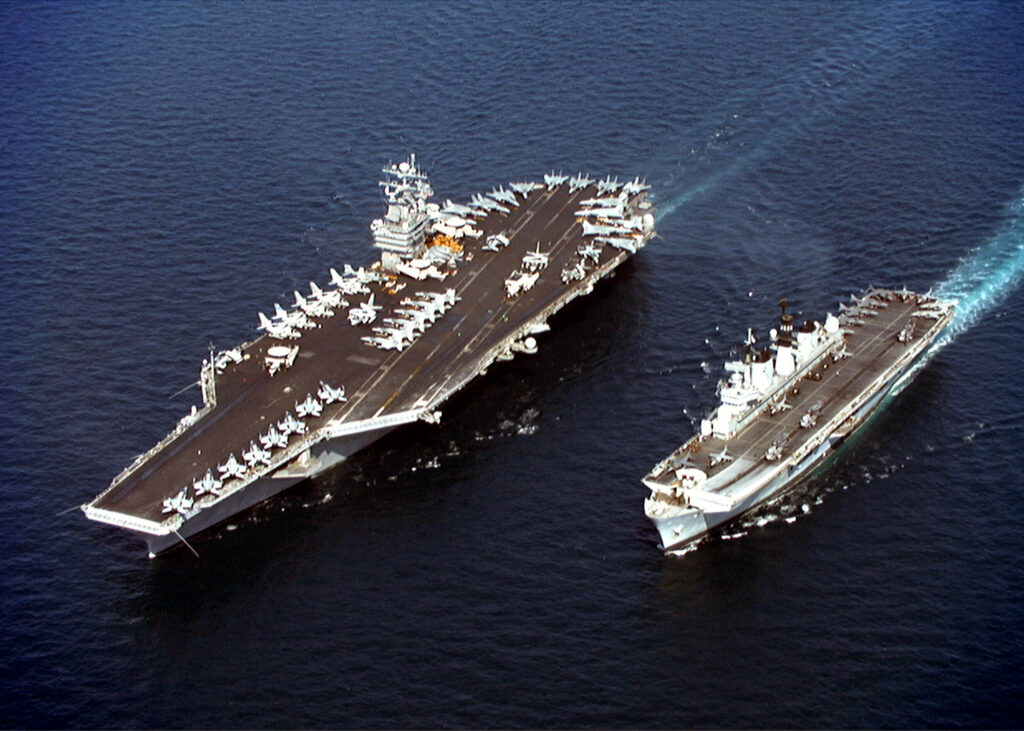Huntington Ingalls Industries (HII) has been awarded a $2.9 billion contract for the refueling and complex overhaul (RCOH) of the nuclear-powered aircraft carrier USS John C. Stennis (CVN 74), HII announced.
“We are pleased to be awarded the contract to execute this extensive construction and engineering project,” said Todd West, Newport News’ vice president, in-service aircraft carrier programs. “Our teams have spent three years preparing and planning for each step of the process along the way, and we look forward to continuing our work with our suppliers and Navy partners in anticipation of the ship’s arrival at Newport News.”
The RCOH represents 35% of all maintenance and modernization in an aircraft carrier’s 50-year service life. Stennis’ RCOH will include the refueling of the ship’s reactors, as well as extensive modernization work to more than 2,300 compartments, hundreds of tanks and systems. In addition, major upgrades will be made in the propulsion plant, to the flight deck, catapults, combat systems and the island.
Built at Newport News, Stennis was christened in 1993 and delivered to the Navy in 1995. The ship is the seventh Nimitz-class carrier to undergo this major life-cycle milestone. More than 4,000 Newport News employees will support the execution effort, which will continue through late 2025.
About USS John C. Stennis:
USS John C. Stennis (CVN-74) is the seventh Nimitz-class nuclear-powered supercarrier in the United States Navy, named for Democratic Senator John C. Stennis of Mississippi.
The mission of John C. Stennis and her air wing (CVW-9) is to conduct sustained combat air operations while forward-deployed. The embarked air wing consists of eight to nine squadrons. Attached aircraft are Navy and Marine Corps F/A-18 Hornet, EA-18G Growler, MH-60R, MH-60S, and E-2C Hawkeye.

The air wing can engage enemy aircraft, submarines, and land targets, or lay mines hundreds of miles from the ship. John C. Stennis’s aircraft are used to conduct strikes, support land battles, protect the battle group or other friendly shipping, and implement a sea or air blockade. The air wing provides a visible presence to demonstrate American power and resolve in a crisis. The ship normally operates as the centerpiece of a carrier battle group commanded by a flag officer embarked upon John C. Stennis and consisting of four to six other ships.
John C. Stennis’s two nuclear reactors give her virtually unlimited range and endurance and a top speed in excess of 30 knots (56 km/h, 34.5 mph). The ship’s four catapults and four arresting gear engines enable her to launch and recover aircraft rapidly and simultaneously. The ship carries approximately 3 million US gallons (11,000 m3) of fuel for her aircraft and escorts, and enough weapons and stores for extended operations without replenishment. John C. Stennis also has extensive repair capabilities, including a fully equipped Aircraft Intermediate Maintenance Department, a micro-miniature electronics repair shop, and numerous ship repair shops.
For defense, in addition to her air wing and accompanying vessels, John C. Stennis has NATO RIM-7 Sea Sparrow and Rolling Airframe Missile (RAM) surface-to-air missile systems, the Phalanx Close-in Weapons System for cruise missile defense, and the AN/SLQ-32 Electronic Warfare System.



